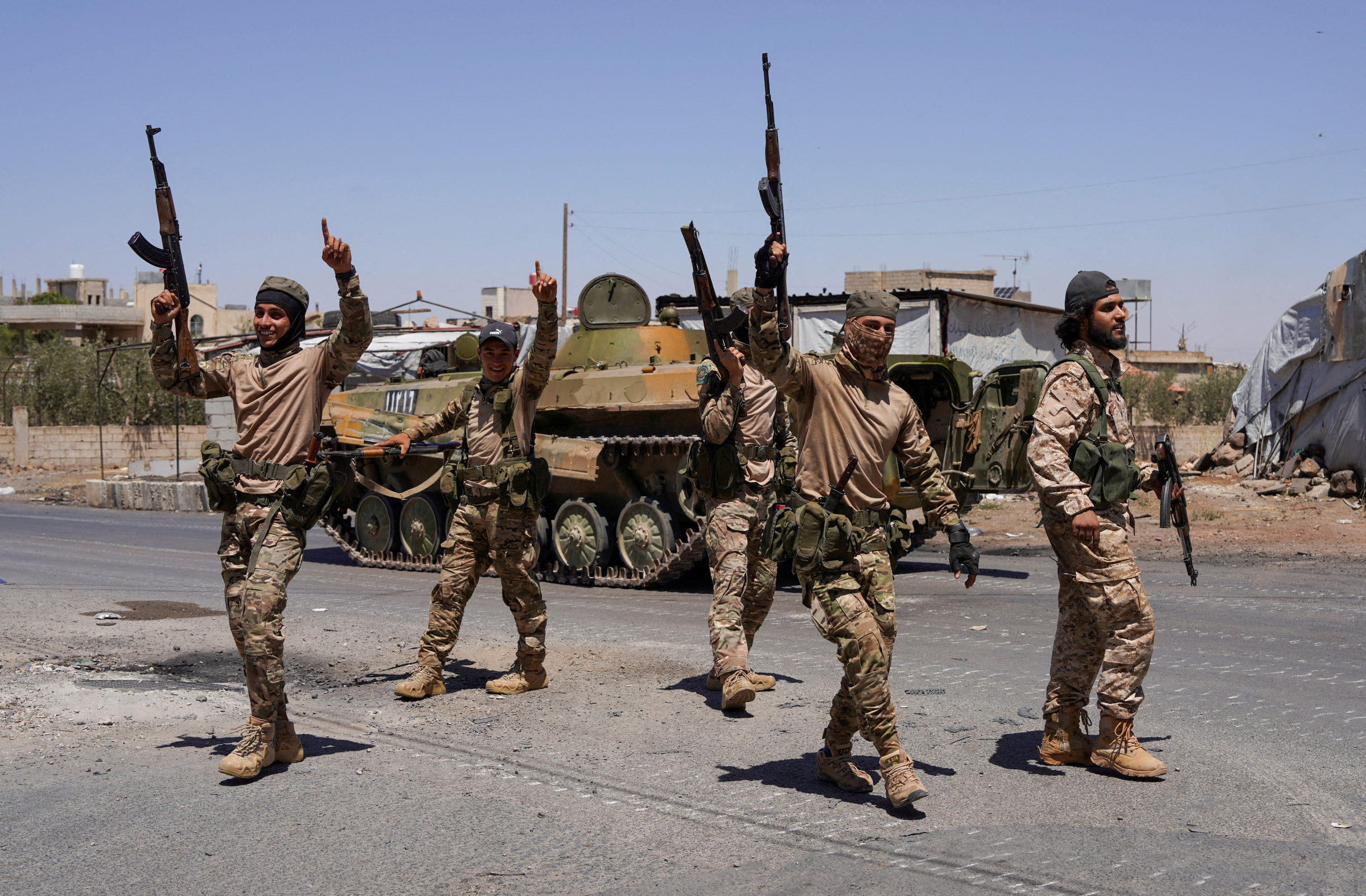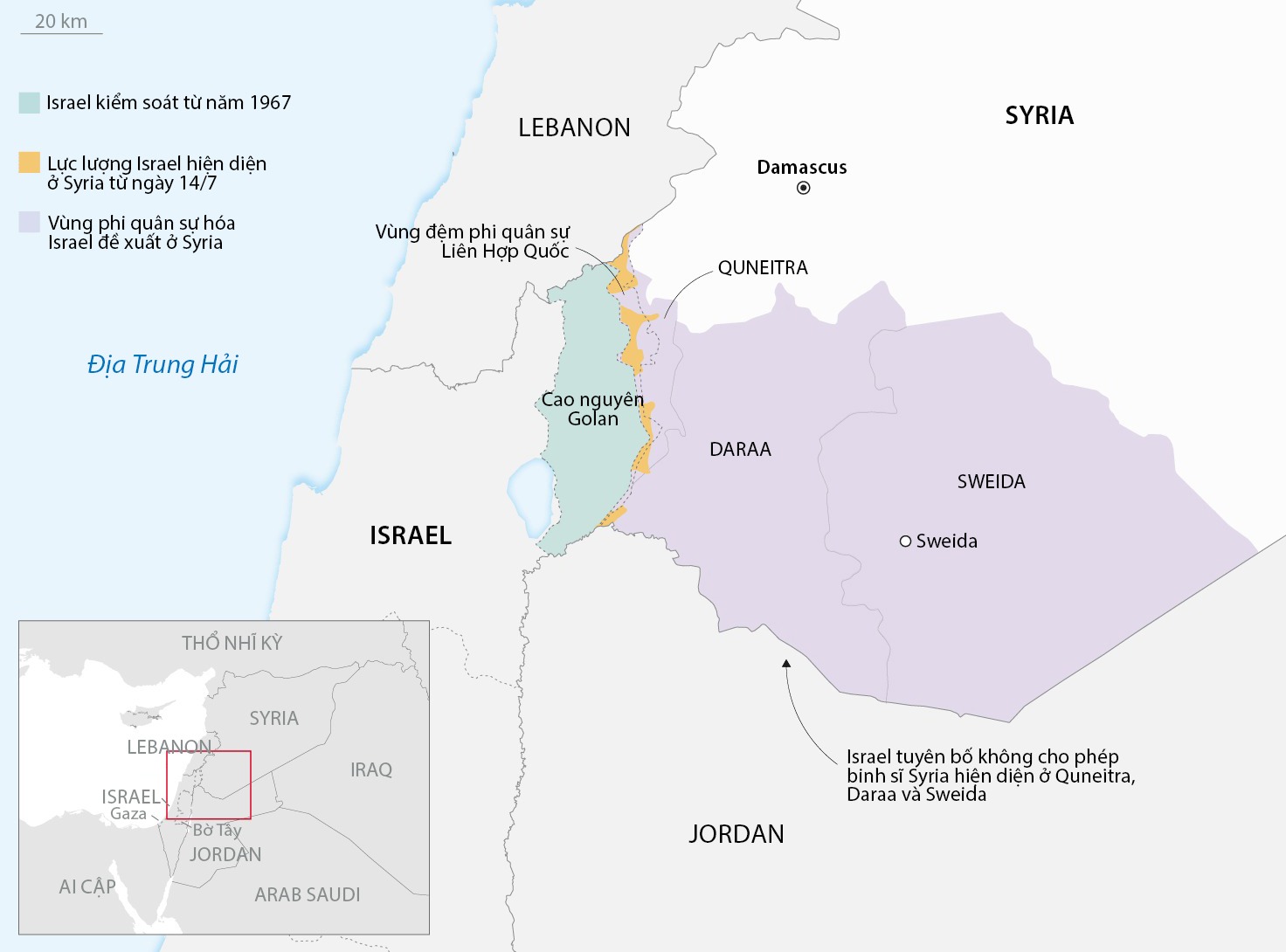Sweida, the capital city of the eponymous southern Syrian province, witnessed a week of intense fighting between Druze militias and government forces alongside Bedouin armed groups.
The Druze, who form the majority in Sweida, and the Bedouin minority have a long history of conflict. The recent clashes erupted on 13/7 after Bedouin gunmen kidnapped a Druze shopkeeper, triggering a series of retaliatory abductions and attacks that left 37 people dead.
While not the first ethnic clash under interim President Ahmed al-Sharaa, this conflict gained significant attention when Damascus deployed troops to Sweida on 15/7, escalating the violence.
In just one week, the death toll surged to 1,120, including over 720 Druze fighters and civilians, 354 government soldiers, and 21 Bedouins, according to the Syrian Observatory for Human Rights (SOHR).
Sources suggest President Sharaa may have miscalculated by sending troops to Sweida, misinterpreting a US envoy's comment about a "centralized Syria" and the substance of Syrian-Israeli negotiations in Azerbaijan.
 |
Syrian security forces in Sweida city, Sweida province on 16/7. Photo: Reuters |
Syrian security forces in Sweida city, Sweida province on 16/7. Photo: Reuters
After ousting President Bashar al-Assad, Sharaa distanced Syria from Iran and restored ties with the West. The US, an ally of Israel, also mended relations with Syria, sending a delegation to Damascus.
On 9/7, Thomas Barrack, US President Donald Trump's special envoy to Syria, envisioned a centralized Syrian government in Damascus, without autonomous regions for Kurds, Alawites, or Druze. These minorities distrust Sharaa's new Islamist government, fearing reprisals after witnessing the suppression of the Alawite uprising.
"We've seen that the federal model in Syria doesn't work," Barrack said after meeting Sharaa. "There's only one path, and it leads to Damascus."
Israel, with its 2% Druze population, holds considerable sway in southern Syria. These Israeli Druze maintain ties with Syrian Druze, and many serve in the Israeli Defense Forces (IDF). They have repeatedly urged Prime Minister Benjamin Netanyahu to intervene militarily in Sweida if necessary to protect the Druze.
When the Druze-Bedouin conflict ignited in Sweida, Syrian officials interpreted Barrack's comment as a green light to deploy troops and tanks to restore order.
A Syrian official stated they informed the US of the Sweida deployment plan but received no response, interpreting this as tacit approval from Washington and assuming Tel Aviv would not intervene.
Sharaa's belief that Israel would not react was further reinforced by recent normalization talks between the two countries in Azerbaijan. Sources suggest Sharaa even believed they had reached an unspoken agreement about bringing Sweida under Damascus's control. The Israeli Prime Minister's office declined to comment.
Confident in these assumptions, government convoys advanced towards Sweida on 15/7, where they were ambushed by Druze militia, resulting in dozens of government casualties.
Instead of restoring order, Syrian forces retaliated, joining Bedouin fighters in attacking Druze gunmen and civilians across the city. The death toll quickly climbed into the hundreds.
Sharaa's assessment proved wrong. As violence escalated in Sweida, the IDF launched airstrikes on Syrian army positions in the city to protect the Druze.
A day later, the IDF fired missiles at Damascus, destroying the Syrian Ministry of Defense headquarters in a major show of force. Sharaa, realizing his misjudgment, ordered a withdrawal from Sweida to avoid direct conflict with Israel.
Fighting continued even after the Syrian army's withdrawal, with Bedouin forces and armed Islamist groups from across the country attacking Sweida. They were accused of massacres and arson before a US-brokered ceasefire with the Druze was reached.
A Damascus-based diplomat suggested Syrian officials were overconfident in their plan to control Sweida, "relying on a message from the US that didn't reflect the reality on the ground".
Joshua Landis, director of the Center for Middle East Studies at the University of Oklahoma, believes the Sharaa administration overreached by interpreting Barrack's rejection of federalism as support for using force against the Druze.
"Sharaa's military officials misunderstood the US. They also misinterpreted Israel's stance on Sweida during the Baku talks," Landis told Reuters.
Robert F. Worth of The Atlantic argues that the Sweida events reflect US-Israeli discord over the new Syrian government. The US seeks a unified, centralized Syria, while Israel believes its security lies in a weakened Syria, fragmented and unable to pose a threat.
 |
Location of Sweida province and its capital city in southern Syria, bordering the Golan Heights and Jordan. Graphic: CNN |
Location of Sweida province and its capital city in southern Syria, bordering the Golan Heights and Jordan. Graphic: CNN
The US State Department declined to comment specifically but affirmed its support for Syria's territorial integrity. It called on the Syrian government to protect all citizens, including minorities, and to punish those responsible for the violence.
A Syrian Foreign Ministry official stated Sharaa's troop deployment was based on "purely national considerations" to end the bloodshed, protect civilians, and prevent further internal conflict.
Sharaa blamed "lawless groups" for escalating the Sweida conflict and vowed to hold them accountable without mentioning the government's role. An intelligence source noted Sharaa's difficulty in controlling events on the ground due to the presence of former extremist fighters within the Syrian army.
While the shooting stopped in Sweida on 20/7, Bedouin fighters still control access to the city, trapping around 30,000 Druze civilians with dwindling supplies. "We will not give up," declared a Bedouin fighter guarding a checkpoint on the main road into Sweida.
Nhu Tam (according to The Atlantic, Reuters, AFP)












